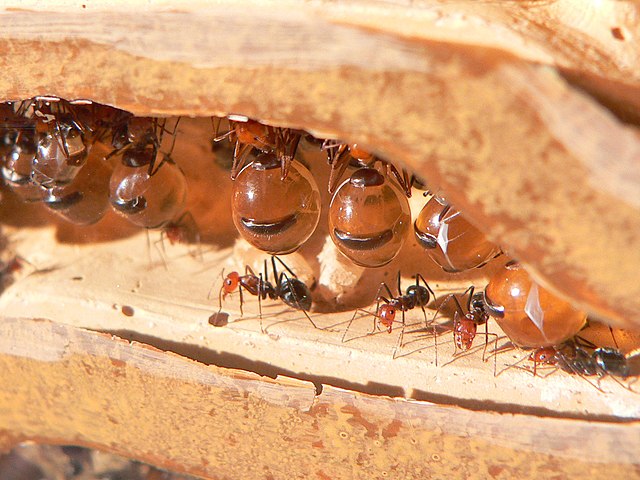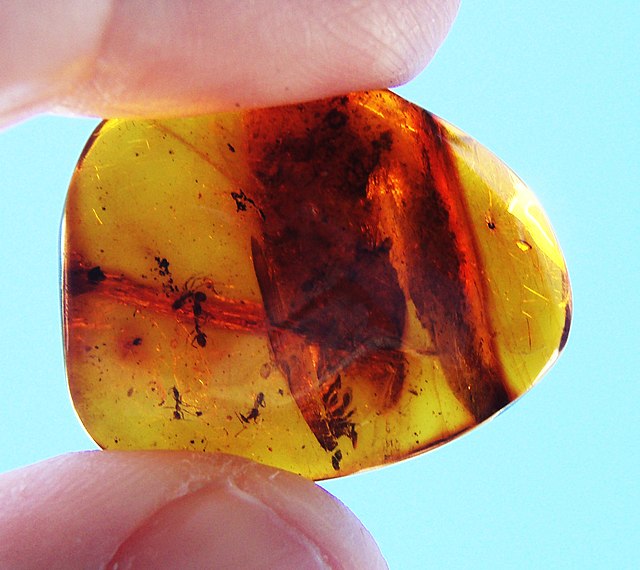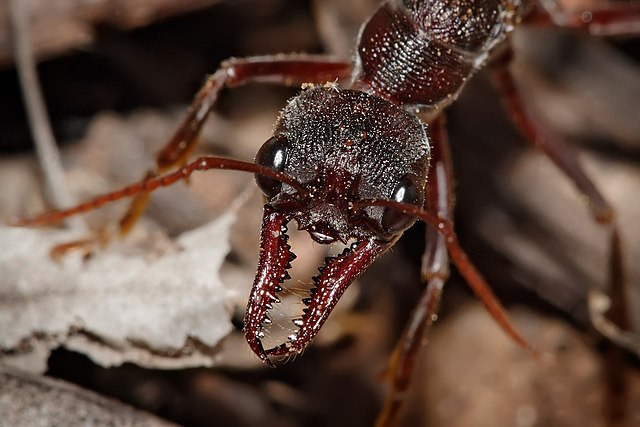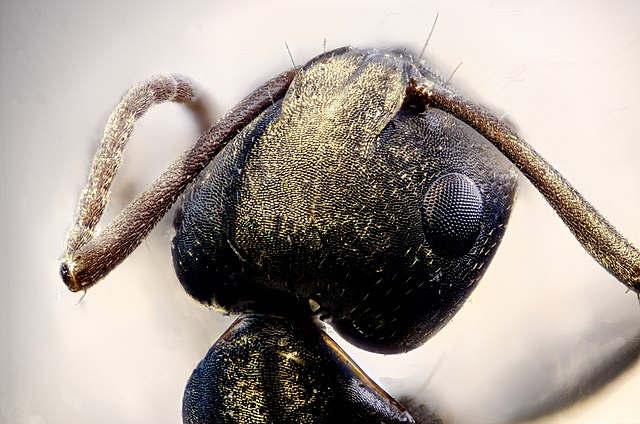Honeypot ants, also called honey ants, are ants which have specialized workers that consume large amounts of food to the point that their abdomens swell enormously. Other ants then extract nourishment from them, through the process of trophallaxis. They function as living larders. Honeypot ants belong to any of several genera, including Myrmecocystus and Camponotus. They were first documented in 1881 by Henry C. McCook, and described further in 1908 by William Morton Wheeler.
Myrmecocystus honeypot ants, showing the repletes or plerergates, their abdomens swollen to store honey, above ordinary workers
Honeypot ants compared to a human hand. The dark dorsal sclerites are widely separated by the stretched arthrodial membrane of the inflated abdomen of each replete.
Ants are eusocial insects of the family Formicidae and, along with the related wasps and bees, belong to the order Hymenoptera. Ants evolved from vespoid wasp ancestors in the Cretaceous period. More than 13,800 of an estimated total of 22,000 species have been classified. They are easily identified by their geniculate (elbowed) antennae and the distinctive node-like structure that forms their slender waists.
Ant
Ants fossilised in Baltic amber
Bull ant showing the powerful mandibles and the relatively large compound eyes that provide excellent vision
Ant head






